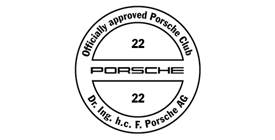Just fixed my caliper plate lift. Here is a write up in case it's useful to anyone. The starting point for me was front pads and discs both worn with moderate plate lift so that it was impossible to fit new pads. One of the pads was stuck completely in the caliper which caused a pull to one side on hard braking.
This tutorial is great for general pad/disc replacement.
http://www.youtube.com/watch?v=LiF3UFF66Ys
Parts I used:
2x Sebro front discs + 1x axle set Pagid pads (CarParts4Less were the cheapest I could find)
4x 928 351 096 19 damping plate (OPC)
4x 951 351 096 00 damping plate (OPC)
8x M6x12mm stainless steel button head screw Screwfix item no 40975
2x Brake pad wear sensors (ECP)
If you already have the damping plates they can apparently be reused with contact adhesive. In my case they were missing...
1. Put the front of the car on axle stands and remove the wheels.
2. Use a special tool (or water pump pliers and a block of wood) to squeeze the brake pads and push the pistons back into the caliper. The pistons are delicate so don't lever against them. You might need to syringe brake fluid out of the reservoir to stop it overflowing.
3. Use water pump pliers to squeeze the big cross shaped clip and pull out the brake pads and wear sensor. The pads may not come out if the plate lift is bad.
4. Put a clamp on the flexible brake line and crack open the joint to the caliper with a 14mm open ended spanner.
5. Loosen the two 19mm caliper bolts with a big breaker bar. Remove the bolts and the caliper. The flex pipe fitting does not swivel so you need to rotate the whole caliper to disconnect it. The clamp should stop the brake fluid running out. To stop water and dirt getting into the caliper I made a plug by flaring a short length of brake line and crimping the other end shut in a vice.
6. Now the hard part, remove the four torx screws from each caliper that holds the slider plates in. The screws are loctited in so you need to get some heat on them to destroy the loctite. My preferred method is to MIG weld an M8 nut onto each screw... this generates loads of localised heat (less likely to damage the seals) and gives you plenty of purchase to wind the screws out. The loctite makes the screws stiff even after putting all that heat in.


7. Give the calipers and slider plates a good clean. The slider plates are stainless steel so they should be reusable. Scrape the corrosion off the caliper (the stuff that was pushing the plates up) with a file or screwdriver. The corrosion is soft so scrapes off easily. With the corrosion removed the plate should sit flat and new pads should be a reasonably loose fit and just drop in.


8. Refit the slider plates with new screws. I put Optimoly TA (the silver stuff) between the plates and caliper to try and stop the corrosion happening again, and also on the screws so they can be removed more easily the next time. New screws are not available from Porsche without the plates... the factory screws are torx head and 14mm long. I used allen head, 12mm long (easier to get).

9. Fit new disc, caliper and pads (as per tutorial link above). I used new wear sensors because the old ones disintegrated removing from the old pads. Torque caliper bolts to 85Nm

10. Bleed brakes. I used a Gunson Eezibleed for this and it made it extremely easy...
The end result... it's completely transformed the car. I didn't realise how bad the brakes had got, loads of bite and best of all it doesn't pull to one side!
This tutorial is great for general pad/disc replacement.
http://www.youtube.com/watch?v=LiF3UFF66Ys
Parts I used:
2x Sebro front discs + 1x axle set Pagid pads (CarParts4Less were the cheapest I could find)
4x 928 351 096 19 damping plate (OPC)
4x 951 351 096 00 damping plate (OPC)
8x M6x12mm stainless steel button head screw Screwfix item no 40975
2x Brake pad wear sensors (ECP)
If you already have the damping plates they can apparently be reused with contact adhesive. In my case they were missing...
1. Put the front of the car on axle stands and remove the wheels.
2. Use a special tool (or water pump pliers and a block of wood) to squeeze the brake pads and push the pistons back into the caliper. The pistons are delicate so don't lever against them. You might need to syringe brake fluid out of the reservoir to stop it overflowing.
3. Use water pump pliers to squeeze the big cross shaped clip and pull out the brake pads and wear sensor. The pads may not come out if the plate lift is bad.
4. Put a clamp on the flexible brake line and crack open the joint to the caliper with a 14mm open ended spanner.
5. Loosen the two 19mm caliper bolts with a big breaker bar. Remove the bolts and the caliper. The flex pipe fitting does not swivel so you need to rotate the whole caliper to disconnect it. The clamp should stop the brake fluid running out. To stop water and dirt getting into the caliper I made a plug by flaring a short length of brake line and crimping the other end shut in a vice.
6. Now the hard part, remove the four torx screws from each caliper that holds the slider plates in. The screws are loctited in so you need to get some heat on them to destroy the loctite. My preferred method is to MIG weld an M8 nut onto each screw... this generates loads of localised heat (less likely to damage the seals) and gives you plenty of purchase to wind the screws out. The loctite makes the screws stiff even after putting all that heat in.


7. Give the calipers and slider plates a good clean. The slider plates are stainless steel so they should be reusable. Scrape the corrosion off the caliper (the stuff that was pushing the plates up) with a file or screwdriver. The corrosion is soft so scrapes off easily. With the corrosion removed the plate should sit flat and new pads should be a reasonably loose fit and just drop in.


8. Refit the slider plates with new screws. I put Optimoly TA (the silver stuff) between the plates and caliper to try and stop the corrosion happening again, and also on the screws so they can be removed more easily the next time. New screws are not available from Porsche without the plates... the factory screws are torx head and 14mm long. I used allen head, 12mm long (easier to get).

9. Fit new disc, caliper and pads (as per tutorial link above). I used new wear sensors because the old ones disintegrated removing from the old pads. Torque caliper bolts to 85Nm

10. Bleed brakes. I used a Gunson Eezibleed for this and it made it extremely easy...
The end result... it's completely transformed the car. I didn't realise how bad the brakes had got, loads of bite and best of all it doesn't pull to one side!









